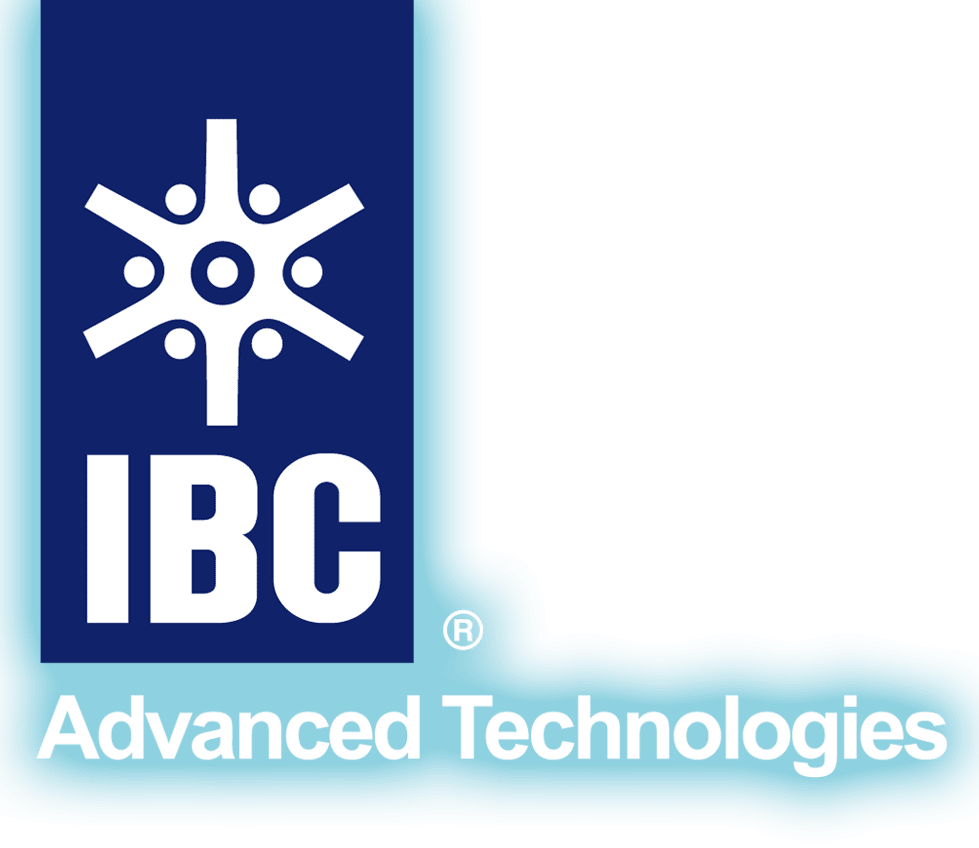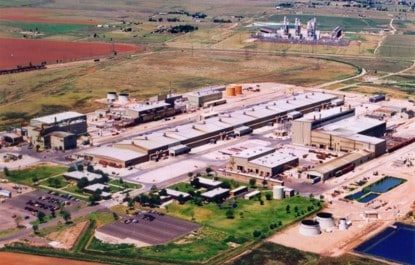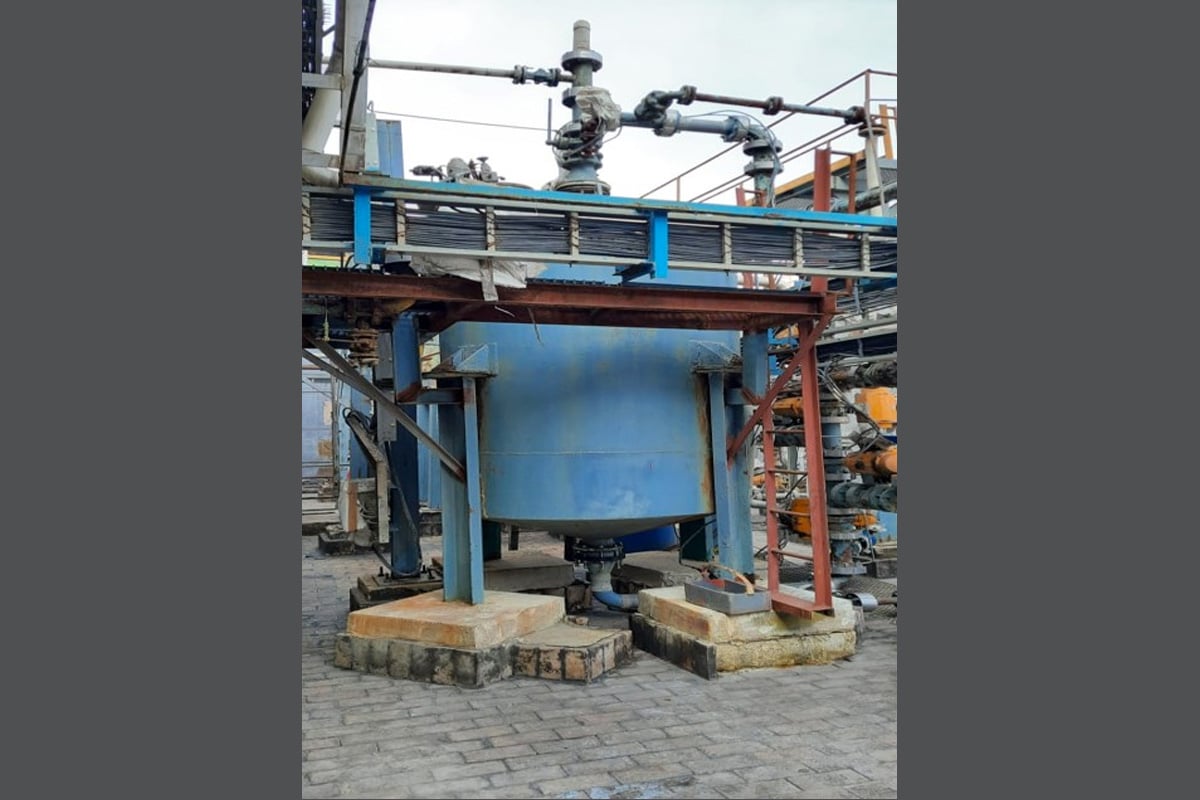A major challenge in the smelting and refining of copper (Cu) is the control of the concentration levels of metal impurities that are deleterious to the final copper product. High purity copper is required for high-tech applications. Bismuth (Bi) and antimony (Sb) are two of the most critical impurities, which cause grain boundary cracks in wiredrawing.
MRT™ has been shown to be effective for both bismuth and antimony removal from copper tank house electrolytes. A major benefit of the MRT™ process is the production of byproduct pure bismuth and antimony salts that may be resold for value.
The MRT™ Bismuth Removal Process Produces Minimal Waste, Recycles the Sulfuric Acid Eluent and Produces a Saleable Pure Bismuth Bisulfate Product
Bismuth is a significant contaminant in copper refineries due to its propensity to decrease electrical conductivity and the mechanical strength of annealed wire, impede recrystallization, and induce hot shortness during the hot rolling process in the production of rod. As a result of the problems associated with bismuth, its concentration must be carefully controlled and managed in the refinery tank house.
Process advantages of the award winning SuperLig® MRT™ bismuth removal system include:
- Cost-effective, efficient, and environmentally friendly control of bismuth concentration in copper electrolytes
- Very high selectivity and capacity for bismuth, even in the presence of much higher concentrations of copper or other metals in the electrolyte
- Use of simple and refinery-compatible reagents (water and sulfuric acid), which are recycled
- Elution of bismuth off the SuperLig® 83 column with a small volume of sulfuric acid, which can be recycled, resulting in a concentrated, high purity bismuth bisulfate, Bi(HSO4)3, product that can be sold rather than being discarded into the environment
- Rapid loading and elution kinetics with flow rates above 0.14 bed volumes (BV)/minute (750 - 910 L/minute)
- Complete compatibility with the copper electrorefining acid matrix
SuperLig® 83 is being used at copper refineries worldwide to cost-effectively and efficiently control the level of bismuth from concentrations as high as 1 g/L.
Case Study: ASARCO, Amarillo, Texas, U.S.A.
In October 2009, ASARCO replaced its old ion exchange process for copper electrolyte purification with MRT™. Between January 2010 and December 31, 2015, the amount of bismuth processed at ASARCO in copper anodes ranged from 1,360 to 5,900 kg per month.

The MRT™ system installation at ASARCO and its advantages were presented at the Copper 2013 Conference in Santiago, Chile
- MRT™ proven to be an important strategic technology for control of bismuth impurity in copper electrorefining electrolytes
- No pick up or loss of copper during loading phase
- Efficient (high flow rates due to rapid kinetics), high bismuth selectivity and high loading capacity
- Lower elution volume resulting in a very concentrated eluate solution, from which high purity bismuth bisulfate is precipitated and collected by filtration resulting in a product with significant market value that contributes to a reduction in operating costs
- Low number of bed volumes used to remove bismuth from SuperLig® 83, making it possible to have a smaller purification plant than would be the case when using other methods for bismuth removal
- Operation of the electrolyte purification plant from the control room via control logics from a dual screen monitor making it possible for the control room operator to visit the electrolyte purification plant only for routine sampling, cleaning, and emptying the filter press
Case Study: Birla Copper, Dahej, Gujarat, India
Hindalco’s copper division, Birla Copper, operates one of the largest copper refineries in the world at Dahej, Gujarat India. Birla Copper uses the SuperLig® 83 MRT™ process to selectively extract bismuth from copper electrolyte. Read about the experience at Birla Copper.
Benefits of the MRT™ process at Birla Copper were presented at the Copper 2019 Conference in Vancouver, Canada:
- Bismuth is selectively and effectively removed from feed without addition of new chemical reagents
- SuperLig® 83 resin has high capacity and high selectivity for bismuth
- There is no pick up or loss of copper during the loading phase
- There is excellent agreement between mass balance values between bismuth loaded and bismuth removed from the column, about 50 kg/cycle
- Loading capacity of SuperLig® 83 is reached after more than 70 BV when bismuth concentration in feed is around 300 mg/L
- Use of small amount of concentrated sulfuric acid eluent produces pure (99.5%+) concentrated bismuth bisulfate precipitate that can be collected by filtration and has significant market value contributing to reduction of operating cost
- Minimal waste is generated in the green chemistry SuperLig® MRT™ process
- The MRT™ process is environmentally benign and a proven strategy to control bismuth impurity in copper electrorefining electrolytes
- Other commercially available processes target a combination of impurities (antimony + bismuth), not only bismuth, making them inefficient and with a higher capital expense
- The SuperLig® MRT™ process is compatible with the acid matrix used in copper electrorefining
- The SuperLig® resin has high capacity and selectivity for bismuth





